Water Treatment
Aqua Needs Ro
Water Treatment Processes:

Objective: Ensure water is safe and clean for human consumption. We use proven multi-step processes to treat raw water and make it potable.
Key Processes:
• Coagulation & Flocculation: Addition of chemicals to bind suspended particles.
• Sedimentation: Settling of heavier particles at the tank bottom.
• Filtration: Removal of fine particles using sand, gravel, or membrane filters.
• Disinfection: Elimination of pathogens using chlorine, ozone, or UV light.
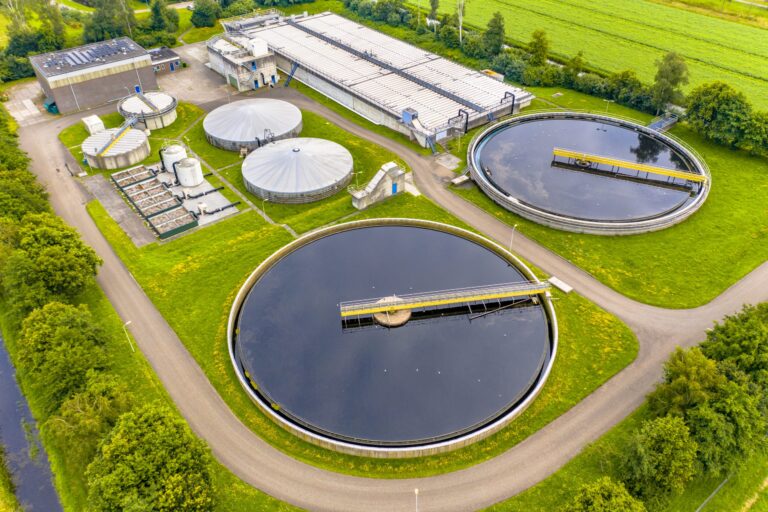
Objective: Treat and purify domestic and industrial wastewater before safe discharge or reuse. Our system ensures environmental compliance and sustainable water reuse.
Key Processes:
• Primary Treatment: Removal of large solids through screening and sedimentation.
• Secondary Treatment: Biological treatment using activated sludge to decompose organic matter.
• Tertiary Treatment: Advanced filtration, nutrient removal, and disinfection for high-quality output.
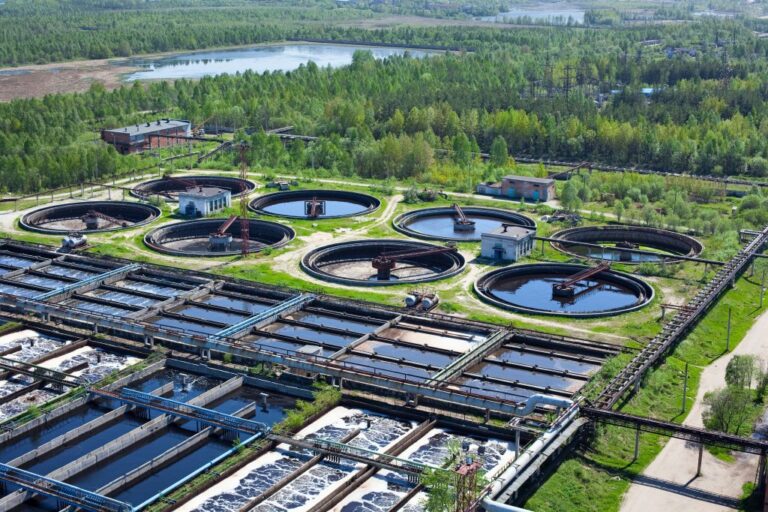
Objective: Prepare water for industrial applications and protect equipment from damage. We offer customized solutions based on your specific industry requirements.
Key Services:
• Boiler Water Treatment: Prevents scaling and corrosion in boiler systems.
• Cooling Water Treatment: Controls scale, corrosion, and microbial growth in cooling towers.
• Contaminant Removal: Targets heavy metals, chemicals, and other industrial pollutants.
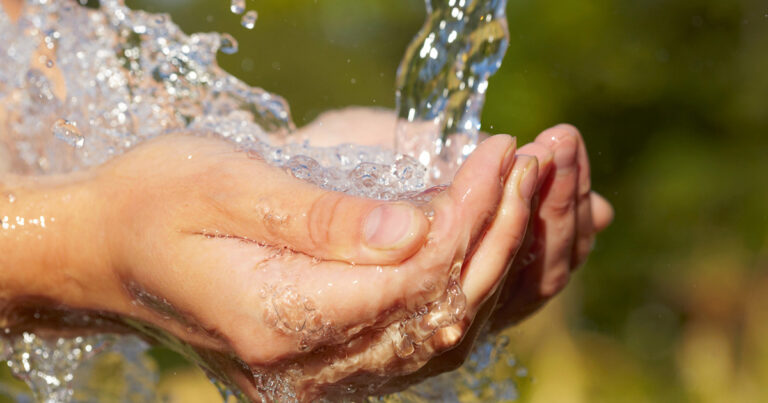
Objective: Convert seawater or brackish water into fresh, usable water. Ideal for coastal and water-scarce regions.
Desalination Methods:
• Reverse Osmosis (RO): Uses pressure to force water through membranes, removing salts.
• Multi-Stage Flash Distillation (MSF): Heats and evaporates water in stages to separate pure water.
• Electrodialysis: Applies electric current and selective membranes to extract ions and purify water.
Aqua Needs RO
Water Softener
A water softener is a device or system designed to remove minerals that cause hard water, primarily calcium (Ca²⁺) and magnesium (Mg²⁺) ions. Hard water can cause scale buildup in pipes and appliances, reduce the effectiveness of soaps and detergents, and leave spots on dishes and glassware.
How a Water Softener Works : Most household water softeners use a process called ion exchange:
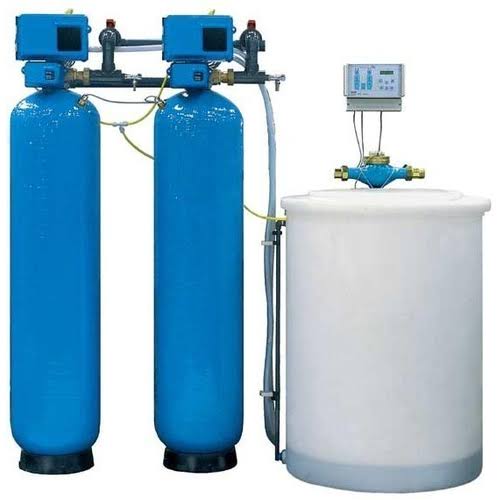
1. Ion Exchange Resin:
o The softener contains a tank filled with resin beads that are coated with
sodium (Na⁺) or potassium (K⁺) ions.
o As hard water flows through, calcium and magnesium ions are attracted to the
resin and swapped with sodium or potassium ions.

01.
2. Regeneration Cycle:
o Over time, the resin becomes saturated with calcium and magnesium.
o A salty brine solution is flushed through the system to recharge the resin with
sodium or potassium.
o The waste minerals and brine are flushed down the drain.

02.
Benefits of Using a Water Softener
• Prevents scale buildup in plumbing and appliances
• Increases the lifespan of water heaters, dishwashers, and washing machines
• Improves soap and detergent effectiveness
• Leaves skin and hair feeling softer after bathing
• Reduces soap scum and spotting on dishes
Testing for Hard Water
You can test your water using:
- DIY test kits
- Laboratory testing
- Soap test: If soap doesn’t lather well, your water might be hard
Types of Water Softeners
| Type | Description |
|---|---|
| Salt-based (Ion Exchange) | Most common; uses salt to remove hardness minerals |
| Salt-free (Conditioners) | Use template-assisted crystallization to prevent scale; doesn’t remove minerals |
| Dual-tank | Two resin tanks allow continuous softening; ideal for high water usage |
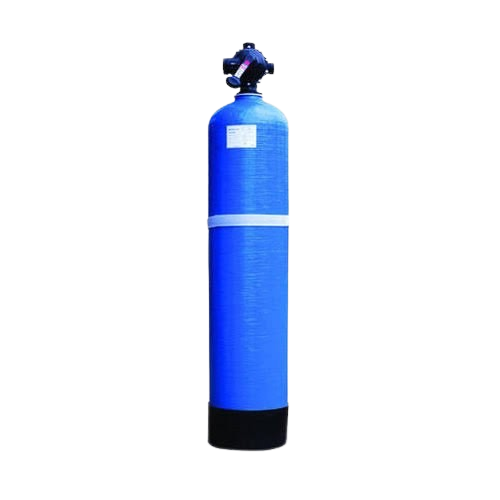
Sand Filter
A sand filter is a water treatment device that removes suspended solids, turbidity, and some pathogens by passing water through sand, and sometimes additional media like gravel.It’s widely used in drinking water purification, swimming pools, irrigation, and industrial processes.
How Sand Filters Work
Water flows through a sand bed where:
• Larger suspended particles get trapped near the top.
• Smaller particles are captured deeper as water filters downward.

| Type | Flow Rate | Key Features | Typical Use | Maintenance |
|---|---|---|---|---|
| Slow Sand Filter | Low (0.1–0.4 m³/m²/h) |
• Develops a biological layer (schmutzdecke) • Breaks down organic matter and pathogens |
Small-scale or rural drinking water treatment | Scraping top layer periodically |
| Rapid Sand Filter | High (5–15 m³/m²/h) |
• Mechanical filtration only • No biological layer forms |
Municipal water plants, swimming pools | Regular backwashing |
Advantages of Sand Filters
• Low operating costs
• Simple to use
• Slow sand filters don’t require chemicals
• Effective at removing turbidity, suspended solids, and some bacteria
Limitations of Sand Filters
• Ineffective at removing dissolved contaminants such as salts or heavy metals
• Slow sand filters require significant space
• Requires routine maintenance and monitoring for optimal performance
Typical Applications of Sand Filters
| Application | Filter Type | Purpose |
|---|---|---|
| Drinking Water | Slow or Rapid | Reduce turbidity and microbes |
| Swimming Pools | Rapid | Remove particulates |
| Irrigation Systems | Rapid or Media Mix | Prevent clogging of drip emitters |
| Industrial Use | Rapid | Pre-treatment before other processes |
| Type | Flow Rate | Key Features | Typical Use | Maintenance |
|---|---|---|---|---|
| Slow Sand Filter | Low (0.1–0.4 m³/m²/h) |
• Develops a biological layer (schmutzdecke) • Breaks down organic matter and pathogens |
Small-scale or rural drinking water treatment | Scraping top layer periodically |
| Rapid Sand Filter | High (5–15 m³/m²/h) |
• Mechanical filtration only • No biological layer forms |
Municipal water plants, swimming pools | Regular backwashing |
Advantages of Sand Filters
• Low operating costs
• Simple to use
• Slow sand filters don’t require chemicals
• Effective at removing turbidity, suspended solids, and some bacteria
Limitations of Sand Filters
• Ineffective at removing dissolved contaminants such as salts or heavy metals
• Slow sand filters require significant space
• Requires routine maintenance and monitoring for optimal performance
Typical Applications of Sand Filters
| Application | Filter Type | Purpose |
|---|---|---|
| Drinking Water | Slow or Rapid | Reduce turbidity and microbes |
| Swimming Pools | Rapid | Remove particulates |
| Irrigation Systems | Rapid or Media Mix | Prevent clogging of drip emitters |
| Industrial Use | Rapid | Pre-treatment before other processes |
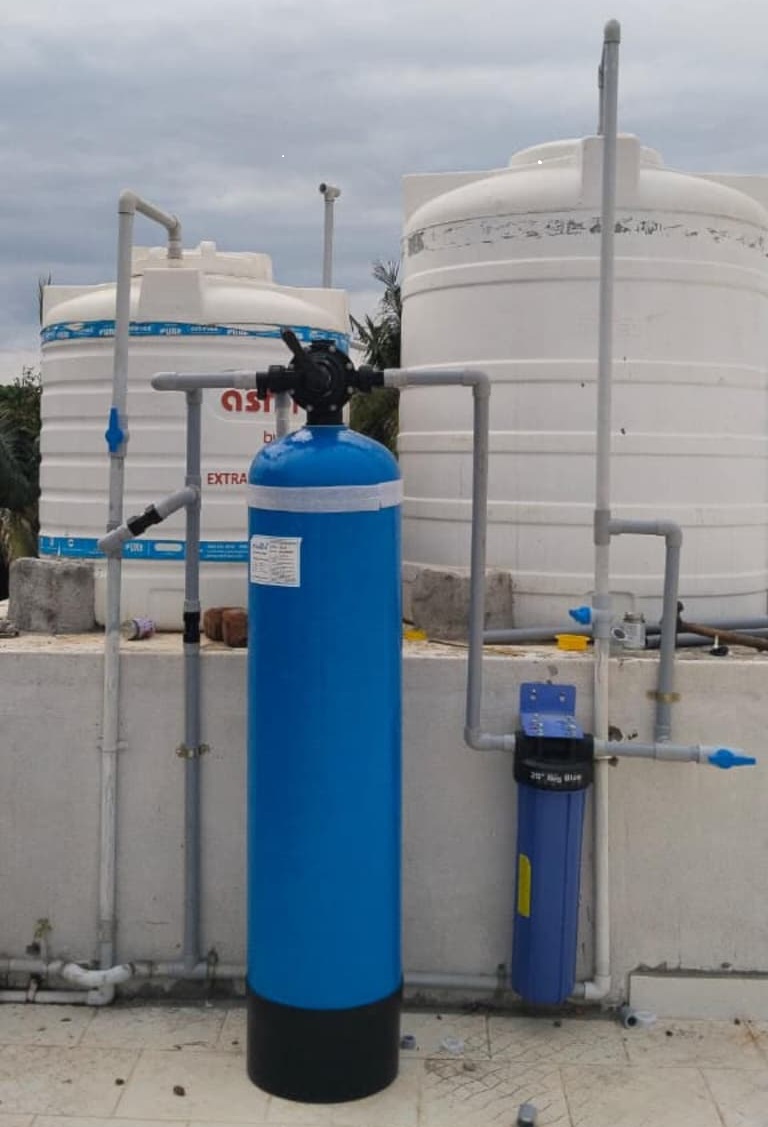
Iron Remover
An iron filter is designed to eliminate iron from water, including both dissolved ferrous iron and particulate ferric iron. Iron presence can cause issues such as rust stains, metallic taste and odor, clogged plumbing, and damage to water softeners or filters.How Iron Filters Work
1. Oxidation: Converts soluble ferrous iron into insoluble ferric iron.
2. Filtration: Removes the particulate ferric iron from the water.
| Type | Appearance | Solubility | Common Source |
|---|---|---|---|
| Ferrous (Fe²⁺) | Clear (dissolved) | Soluble in water | Well water |
| Ferric (Fe³⁺) | Reddish/orange tint | Insoluble | Oxidized iron |
| Bacterial Iron | Slimy biofilm | — | Associated with iron bacteria Private wells |
| Type | Mechanism | Suitable For |
|---|---|---|
| Air Injection (AIO) | Injects air to oxidize iron | Iron up to 10 ppm |
| Catalytic Media (Birm, Filox, Katalox Light) | Media accelerates oxidation | Requires pH ≥ 6.8 |
| Greensand (with potassium permanganate) | Coated media with chemical regeneration | High iron/manganese levels |
| Chemical Injection (chlorine, H₂O₂) | Oxidizes iron and kills bacteria | Iron bacteria or very high iron |
| Manganese Dioxide Filters | Strong oxidizing media | High iron and manganese |
Maintenance Notes
• Air Injection: Periodic backwashing to remove accumulated iron sludge.
• Greensand: Requires regular chemical regeneration.
• Chemical Injection: Needs ongoing chemical supply and injector upkeep.
• Pre-filters: Often necessary to trap sediment and protect the system.
When to Use an Iron Filter
• Iron concentration exceeds 0.3 ppm (EPA secondary standard for aesthetics)
• Presence of red or brown stains on plumbing fixtures, toilets, or laundry
• Water exhibits metallic or rotten egg-like odors (may also indicate sulfur or iron bacteria)
| Type | Appearance | Solubility | Common Source |
|---|---|---|---|
| Ferrous (Fe²⁺) | Clear (dissolved) | Soluble in water | Well water |
| Ferric (Fe³⁺) | Reddish/orange tint | Insoluble | Oxidized iron |
| Bacterial Iron | Slimy biofilm | — | Associated with iron bacteria Private wells |
Common Iron Filter Types
| Type | Mechanism | Suitable For |
|---|---|---|
| Air Injection (AIO) | Injects air to oxidize iron | Iron up to 10 ppm |
| Catalytic Media (Birm, Filox, Katalox Light) | Media accelerates oxidation | Requires pH ≥ 6.8 |
| Greensand (with potassium permanganate) | Coated media with chemical regeneration | High iron/manganese levels |
| Chemical Injection (chlorine, H₂O₂) | Oxidizes iron and kills bacteria | Iron bacteria or very high iron |
| Manganese Dioxide Filters | Strong oxidizing media | High iron and manganese |
Maintenance Notes
• Air Injection: Periodic backwashing to remove accumulated iron sludge.
• Greensand: Requires regular chemical regeneration.
• Chemical Injection: Needs ongoing chemical supply and injector upkeep.
• Pre-filters: Often necessary to trap sediment and protect the system.
When to Use an Iron Filter
• Iron concentration exceeds 0.3 ppm (EPA secondary standard for aesthetics)
• Presence of red or brown stains on plumbing fixtures, toilets, or laundry
• Water exhibits metallic or rotten egg-like odors (may also indicate sulfur or iron bacteria)
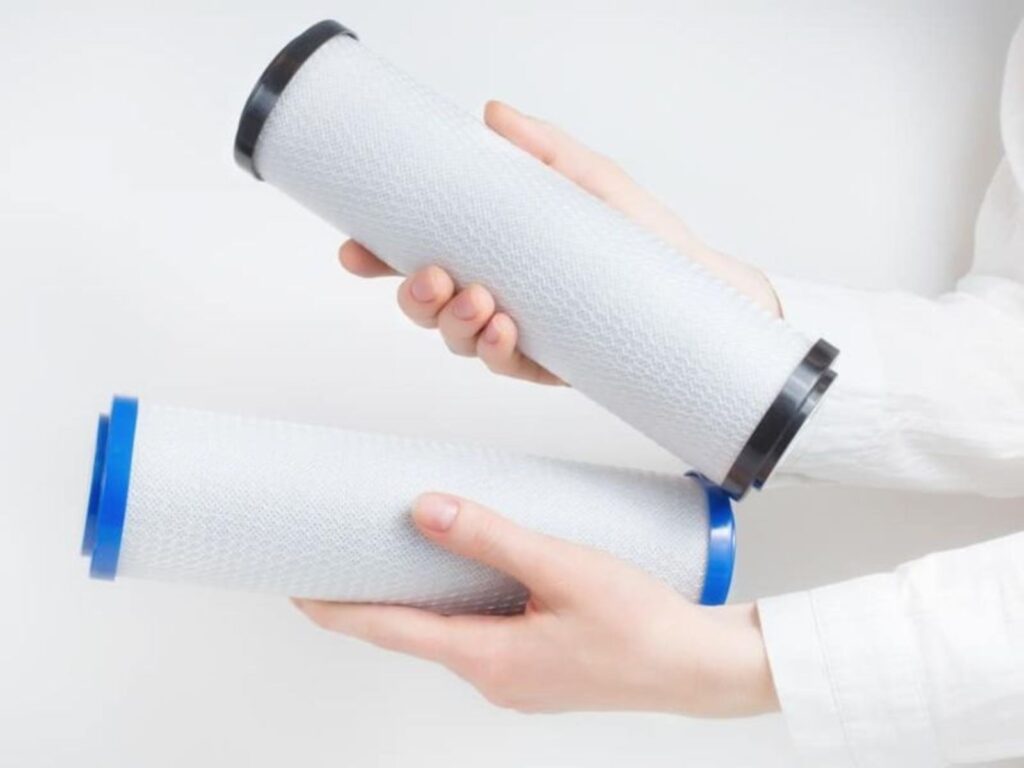
Carbon Filter
A carbon filter, or activated carbon filter, purifies water by using activated carbon to adsorb contaminants—meaning molecules adhere to the carbon’s surface.What Carbon Filters Remove
They are effective at eliminating:
• Chlorine and chloramine
• Volatile Organic Compounds (VOCs)
• Pesticides and herbicides
• Unpleasant tastes and odors
• Some pharmaceuticals
• Disinfection byproducts (e.g., trihalomethanes, THMs)
Note: Carbon filters generally do not remove dissolved minerals (like calcium or magnesium), heavy metals (unless specially treated), or biological contaminants such as bacteria or viruses unless combined with other treatment methods.
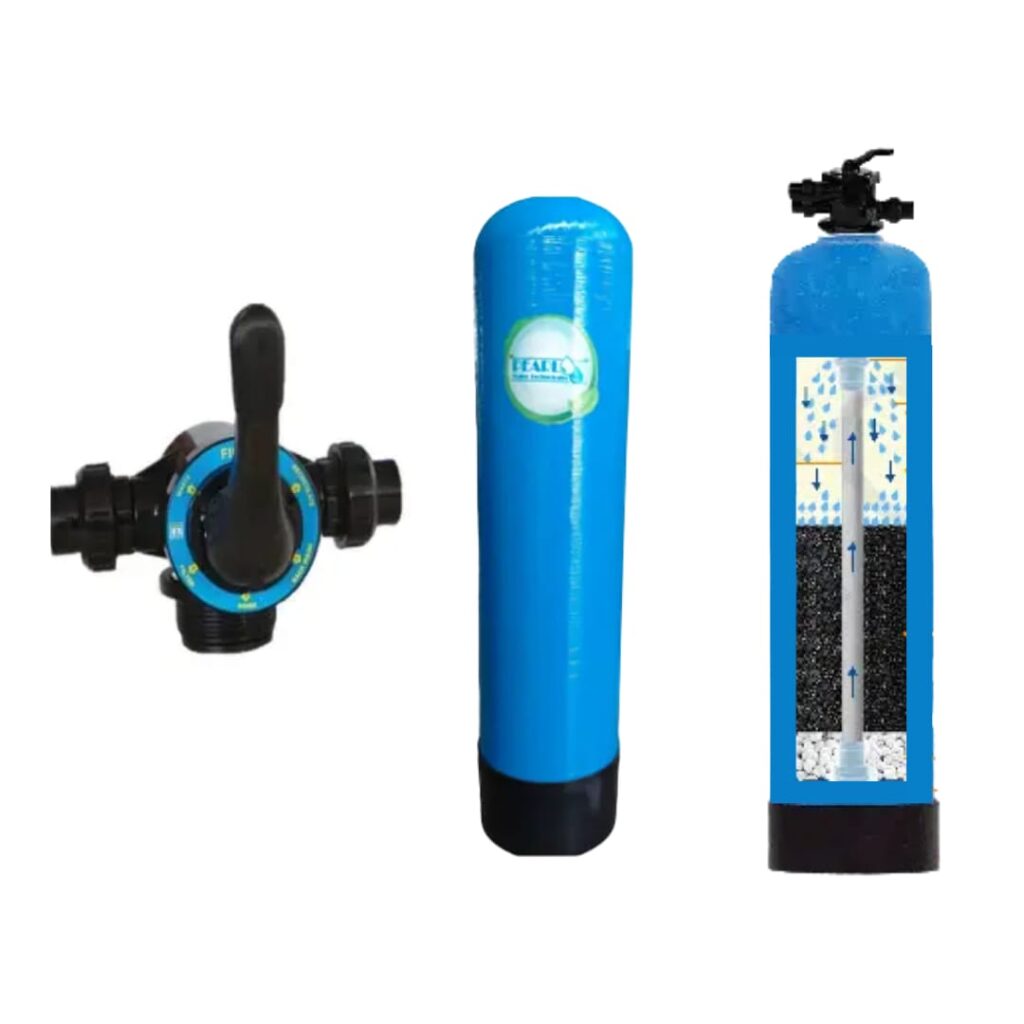
| Type | Description |
|---|---|
| GAC (Granular Activated Carbon) | Loose carbon granules; allows higher flow but less contact time. |
| Carbon Block | Compressed powdered carbon; slower flow but higher filtration efficiency. |
| Catalytic Carbon | Enhanced carbon designed for removing chloramine and hydrogen sulfide. |
How Carbon Filters Work
1. Adsorption: Contaminants adhere to the carbon surface.
2. Chemical Reaction: Some contaminants, like chlorine, react chemically with the carbon and are neutralized.
3. Physical Filtering: Carbon block filters also trap sediment and fine particles.
Applications
| Application | Purpose |
|---|---|
| Point-of-Use (POU) | Under-sink units, faucet filters, water pitchers |
| Whole-House Systems | Treats all incoming water to the home |
| Pre-treatment for RO | Protects reverse osmosis membranes from chlorine damage |
| Aquariums & Fish Tanks | Removes chlorine and organic compounds |
| Industrial & Food Processing | Enhances water taste and safety |
Maintenance and Lifespan
• Filter life varies depending on size, usage, and water quality:
o Pitcher filters: ~2–3 months
o Under-sink filters: ~6–12 months
o Whole-house systems: ~100,000 gallons or 6–12 months
• Regular filter replacement is essential to prevent “breakthrough,” where contaminants pass through exhausted carbon.
Limitations
• Does not remove heavy metals unless specially treated.
• Does not kill bacteria or viruses.
• Effectiveness depends on flow rate, contact time, and carbon type.
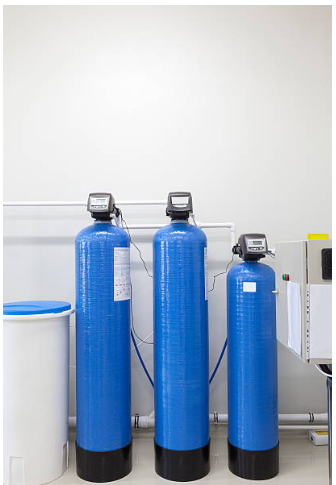
Dual Media Filter
A dual media filter is a pressure filter used in water treatment that contains two layers of filtration media—typically coarse anthracite coal or gravel on top and fine sand below. This design enhances filtration efficiency and extends filter run times before backwashing is required.Typical Media Layers
| Layer | Material | Purpose |
|---|---|---|
| Top Layer | Anthracite coal or coarse gravel | Captures larger particles and reduces clogging |
| Bottom Layer | Fine sand | Traps finer particles for clearer water |
How It Works
1. Water enters the filter from the top.
2. Larger particles are caught in the coarse top layer.
3. Smaller particles move downward and are captured by the fine sand layer.
4. Clean water exits from the bottom.
This multi-depth filtration improves clarity, delays clogging, and reduces pressure loss compared to single-media filters.
Advantages of Dual Media Filters
• Longer filter run times between backwashes
• Enhanced removal of suspended solids and turbidity
• More effective use of filtration media
• Reduced maintenance frequency compared to single-media filters
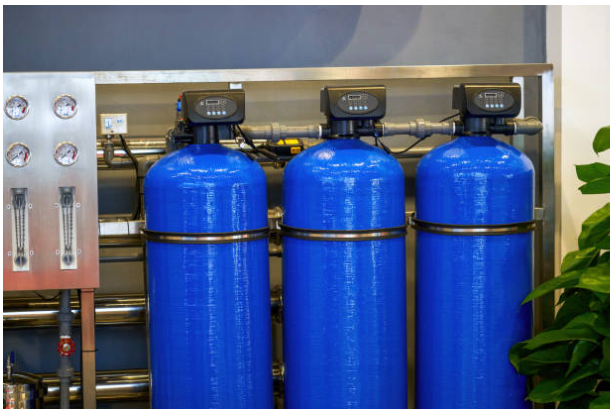
Backwashing Process
When clogged:1. Backwash water flows upward through the filter.
2. Media layers expand and agitate, releasing trapped solids.
3. Media resettles into distinct layers to restore filter performance.
Note: Proper backwashing is essential to maintain media layering and filtration efficiency.

| Application | Purpose |
|---|---|
| Municipal Water Treatment | Clarifies surface water |
| Industrial Process Water | Pre-treatment for RO or softeners |
| Wastewater Polishing | Removes residual solids |
| Cooling Towers | Removes particulate matter |
Comparison with Other Filters
| Filter Type | Media | Notes |
|---|---|---|
| Single Media | Sand or anthracite only | Lower filtration efficiency |
| Dual Media | Anthracite + sand | Good balance of depth and clarity |
| Multimedia Filter | Three or more layers (gravel + sand + garnet) | Best for high turbidity loads |
